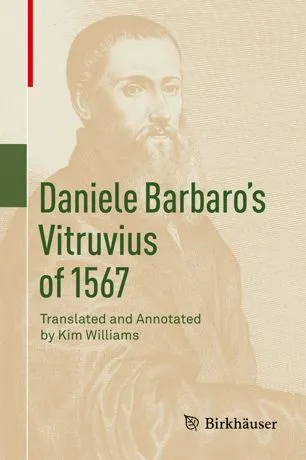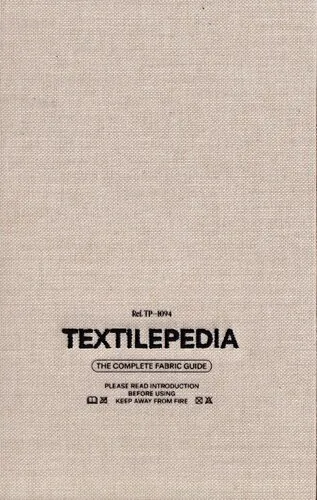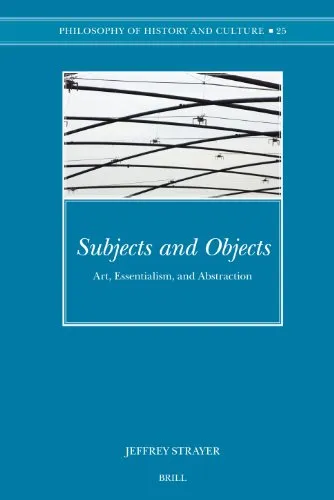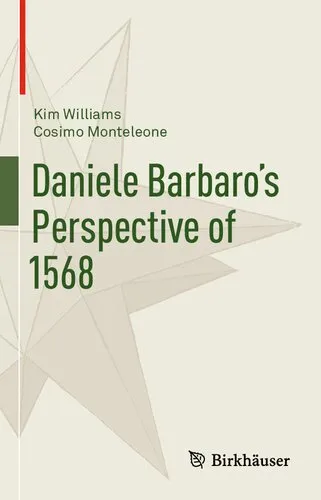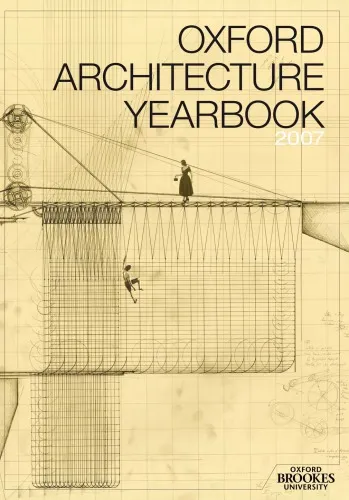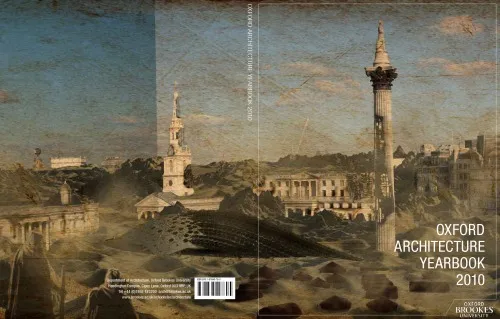Daniele Barbaro’s Vitruvius of 1567
4.5
بر اساس نظر کاربران

شما میتونید سوالاتتون در باره کتاب رو از هوش مصنوعیش بعد از ورود بپرسید
هر دانلود یا پرسش از هوش مصنوعی 2 امتیاز لازم دارد، برای بدست آوردن امتیاز رایگان، به صفحه ی راهنمای امتیازات سر بزنید و یک سری کار ارزشمند انجام بدینکتاب های مرتبط:
معرفی کتاب «Daniele Barbaro’s Vitruvius of 1567»
کتاب «Daniele Barbaro’s Vitruvius of 1567» اثری تاثیرگذار است که به تحلیل و بررسی تعلیقات و ترجمه معروف دانلیه باربارو از اثر کلاسیک «De Architectura» اثر ویتروویوس پرداخته است. در این کتاب، فوکوس اصلی به فهم عمیقتر بازخوانی باربارو از این اثر رنسانسی و شناخت دیدگاههای وی در مورد معماری، فرهنگ و هنر میپردازد. دانلیه باربارو به عنوان یکی از مهمترین روشنفکران دوره رنسانس، نقش اساسی در بازتعریف میراث کلاسیک برای معماران، هنرمندان و فیلسوفان زمان خود ایفا کرد.
خلاصه جامع کتاب
کتاب به دو بخش اصلی تقسیم شده است. در بخش اول به بررسی پیشینه تاریخی و جامعهشناختی دانلیه باربارو و تأثیر او در عرصه معماری پرداخته میشود. این اثر به ما کمک میکند تا درک کنیم چگونه او توانست سنتهای کلاسیک و رنسانس را با هم تلفیق کند. بخش دوم شامل تحلیل دقیق تلاشهای باربارو برای بازتفسیر اصول مهندسی و معماری ویتروویوس است.
علاوه بر این، کتاب جزئیاتی از شیوه ترجمه باربارو، نظرات وی درباره تناسب، تولید پلانها و اشتراکات او با ایدههای سرمایهگذاری معماری در دوره رنسانس میپردازد. تأثیر و اهمیت تصاویر و دیاگرامهای استفاده شده در متن اثر و نقش آنها در درک بهتر اصول پایهای De Architectura نیز از جمله موضوعات پررنگ این بخش هستند.
نکات کلیدی
مطالعه این کتاب چندین نکته کلیدی را برای مخاطبان آشکار میسازد:
- چگونگی بازتفسیر مفاهیم کلاسیک در دوران رنسانس
- نحوه استفاده از اصول هندسی در طراحیهای معماری
- نقش متن و تصویر در ایجاد یک نسخه جامعتر از آثار تاریخی
- اهمیت دقیقنگری و تطبیق ایدهها در جریانهای فکری عصر رنسانس
جملات معروف از کتاب
"Understanding Vitruvius is the key to unlocking the principles of architecture that govern not only structure but also philosophy, art, and harmony."
"The integration of text and geometry is what elevates architecture from mere construction to a profound art form."
چرا این کتاب مهم است؟
این کتاب به دلایل متعددی از اهمیت ویژهای برخوردار است. اولاً، تحلیل دقیق بر برداشت و تفسیر دانلیه باربارو از اصول معماری کلاسیک و کاربرد آنها در عصر رنسانس، به دانشآموختگان و محققان معماری کمک شایانی در درک تحولات تاریخی و زیباییشناسی این حوزه میکند. ثانیاً، این اثر پلی ایجاد کرده است میان ایدههای کلاسیک و نیازهای معاصر، که نشان میدهد چگونه میتوان از متون تاریخی برای مقابله با چالشهای مدرن الهام گرفت.
علاوه بر این، کتاب نشان میدهد که چگونه عناصر بصری و متنی میتوانند در کنار هم برای فراهم کردن اطلاعاتی جامعتر درباره معماری به کار روند. مطالعه اثر کمک میکند تا خواننده عمیقتر به نقش تاریخ ویتروویوس در چارچوب جدید معماریهای مدرن بیاندیشد.
Introduction to Daniele Barbaro’s Vitruvius of 1567
In Daniele Barbaro’s Vitruvius of 1567, readers are offered an illuminating glimpse into Renaissance humanism, architectural theory, and the integration of classical antiquity's wisdom into the cultural revival of the 16th century. A masterpiece of interpretation and scholarship, this book unearths the depth of Daniele Barbaro’s commentary on Vitruvius’ De architectura, a cornerstone text in architectural history. This introduction serves as a gateway to the world of Barbaro, his intellectual milieu, and his contributions to the Renaissance understanding of architecture, aesthetics, and technology.
Detailed Summary of the Book
Barbaro’s annotated 1567 edition of Vitruvius’ De architectura, the quintessential architectural treatise of ancient Rome, is a landmark text that bridges the classical past with the intellectual vibrancy of the Renaissance. My book investigates how Barbaro, a Venetian nobleman, diplomat, and scholar, translated and commented on Vitruvius’ work with the Renaissance audience in mind. Through meticulous research, this text sheds light on Barbaro's collaboration with the architect Andrea Palladio, whose illustrations enrich Barbaro’s interpretations.
Divided into thematic sections, this book delves into Barbaro’s reinterpretation of Vitruvian principles, such as symmetry, proportion, and materiality. It highlights Barbaro’s unique role in fusing ancient architectural theory with innovative Renaissance methods. Special attention is devoted to Barbaro’s emphasis on practical application—he reimagined Vitruvius’ instructions for a Renaissance audience, making them relevant not only to architects but also to patrons and intellectuals of his era. The book also examines Barbaro’s philosophical and semiotic approach, exploring how architecture could embody deeper cultural and metaphysical meanings.
Rich with historical context, this analysis positions Barbaro within the broader conversation of Renaissance humanism. It highlights how his Vitruvius reflects advancements in printing, the burgeoning interest in perspective and optics, and the Renaissance desire to redefine classical antiquity through a contemporary lens. Barbaro’s work is not mere transcription; it is a profound dialogue between eras, illuminating how one of history’s greatest architectural texts evolved in significance over centuries.
Key Takeaways
- Daniele Barbaro’s interpretation of Vitruvius represents a critical turning point in the history of architectural theory and its accessibility to Renaissance culture.
- The collaboration between Barbaro and Andrea Palladio demonstrates the synergy between textual scholarship and architectural practice during the Renaissance.
- Barbaro’s emphasis on practical and aesthetic dimensions of architecture reveals the Renaissance ambition to integrate beauty, utility, and technological advancement.
- The text is a vital resource for understanding how Renaissance thinkers sought to reconcile ancient ideals with their contemporary realities.
- Barbaro’s work underscores the timeless influence of Vitruvius in shaping architectural discourse across the centuries.
Famous Quotes from the Book
"Architecture, being among humanity's noblest endeavors, demands not mere execution but an intellectual grounding in philosophy, history, and the mathematical sciences."
"The harmony of proportions in buildings mirrors the harmony of nature, and to deviate from this natural order is to diminish both form and function."
"By studying the ancients, one does not merely replicate the past but breathes new life into timeless principles."
Why This Book Matters
This book is not just a study of Daniele Barbaro’s Vitruvius; it is a journey into the Renaissance mind and the enduring legacy of classical antiquity. By critically analyzing Barbaro’s work, readers gain insight into a pivotal era in Western intellectual history, where artistic innovation and scholarly rigor combined to reshape the cultural landscape. The discussion of Barbaro’s collaboration with Palladio provides a fascinating case study of interdisciplinary exchange between theory and practice, text and structure.
Furthermore, the book resonates with contemporary architects, historians, and classicists who continue to draw inspiration from Vitruvius and his interpreters. In exploring Barbaro’s meticulous methods and philosophical reflections, it reminds us of the enduring challenge: how to balance tradition with innovation, theory with practice, and timeless ideals with present demands.
Whether you are a scholar, a practitioner of architecture, or a lover of intellectual history, Daniele Barbaro’s Vitruvius of 1567 offers a deep and rewarding exploration of the ways humans engage with the spaces they inhabit, and the ideas that define them. This book matters because it immortalizes an intellectual tradition that continues to shape how we think, build, and live.
دانلود رایگان مستقیم
شما میتونید سوالاتتون در باره کتاب رو از هوش مصنوعیش بعد از ورود بپرسید
دسترسی به کتابها از طریق پلتفرمهای قانونی و کتابخانههای عمومی نه تنها از حقوق نویسندگان و ناشران حمایت میکند، بلکه به پایداری فرهنگ کتابخوانی نیز کمک میرساند. پیش از دانلود، لحظهای به بررسی این گزینهها فکر کنید.
این کتاب رو در پلتفرم های دیگه ببینید
WorldCat به شما کمک میکنه تا کتاب ها رو در کتابخانه های سراسر دنیا پیدا کنید
امتیازها، نظرات تخصصی و صحبت ها درباره کتاب را در Goodreads ببینید
کتابهای کمیاب یا دست دوم را در AbeBooks پیدا کنید و بخرید
1377
بازدید4.5
امتیاز0
نظر98%
رضایتنظرات:
4.5
بر اساس 0 نظر کاربران
Questions & Answers
Ask questions about this book or help others by answering
No questions yet. Be the first to ask!
